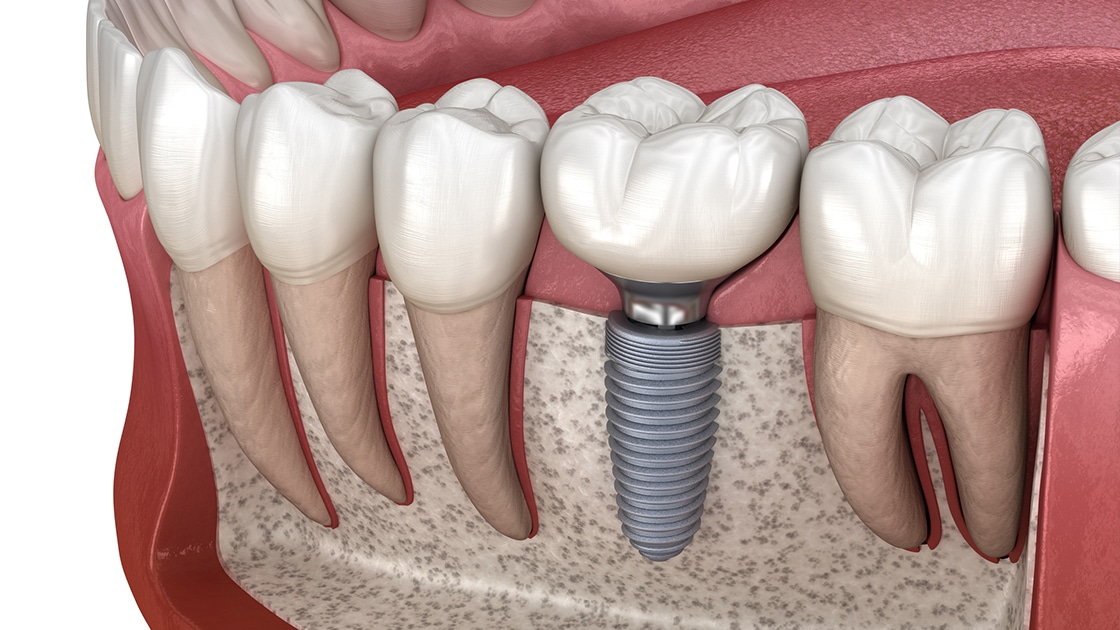The Main Principles Of Dental Sense
The Main Principles Of Dental Sense
Blog Article
Top Guidelines Of Dental Sense
Table of ContentsThe Ultimate Guide To Dental SenseUnknown Facts About Dental SenseThe Definitive Guide to Dental Sense6 Easy Facts About Dental Sense Explained
are clinical devices surgically dental implanted into the jaw to bring back a person's capability to chew or their appearance. They offer assistance for artificial (phony) teeth, such as crowns, bridges, or dentures. When a tooth is lost because of injury or disease, a person can experience problems such as fast bone loss, malfunctioning speech, or adjustments to chewing patterns that lead to pain.Oral dental implant systems include a dental implant body and dental implant joint and might likewise consist of a joint fixation screw. Front tooth filling. The oral implant body is surgically inserted in the jawbone instead of the tooth's root. The oral implant abutment is generally affixed to the dental implant body by the joint addiction screw and prolongs with gum tissues right into the mouth to sustain the affixed artificial teeth
(https://www.edocr.com/v/djpmklwo/matthewmusic33101/dental-sense)Framework of The Oral Implant System choosing dental implants, speak to your dental service provider regarding the possible benefits and risks, and whether you are a candidate for the procedure. Things to take into consideration: Your overall wellness is an important aspect in determining whether you are a great prospect for oral implants, how long it will certainly require to heal, and how much time the dental implant may stay in place.
Cigarette smoking may impact the healing process and decrease the lasting success of the implant. The recovery procedure for the dental implant body may take several months or longer, during which time you typically have a temporary joint instead of the tooth. the dental implant treatment: Thoroughly follow the dental health directions offered to you by your dental copyright.
Rumored Buzz on Dental Sense
Implant failure can result in the demand for one more procedure to fix or replace the implant system. Brings back the capability to chew Brings back cosmetic appearance Helps keep the jawbone from shrinking due to bone loss Maintains the health and wellness of the surrounding bone and gum tissues Helps keep nearby (close-by) teeth stable Improves lifestyle Damages to surrounding all-natural teeth throughout implant placement Injury to the surrounding cells during surgical treatment, such as sinus opening Injury during surgical procedure (as an example, fracture of bordering jawbone) Insufficient function, such as feeling like the teeth do not bite together normally An experience that the tooth hangs or twisting in place arising from an abutment screw loosening up Implant body failure (looseness of the implant body) because of systemic infection, which might be most likely in people with unchecked diabetes mellitus as a result of regional infection in bone and gums sustaining the implant body due to delayed recovery, which may be extra most likely in individuals that smoke Problem cleaning up the gums around the implant, causing bad dental hygiene Unattended periodontal condition Post-surgical feeling numb as a result of nerve impingement or damage Always inform health treatment carriers and imaging technicians that you have dental implants before any magnetic vibration imaging (MRI) or x-ray treatments.
FDA is not familiar with any kind of unfavorable events reported for MRI or x-ray treatments with oral implants. Oral implants systems are commonly made of products that follow global agreement criteria of the International Company for Standardization (ISO) or ASTM International. These standards have information of what makes a safe product.

An oral implant is a structure that replaces a missing out on tooth. With screw-like devices, the cosmetic surgeon inserts an implant right into the jawbone, and it acts as an anchor for a synthetic tooth, called a crown.
Dental Sense Things To Know Before You Buy
Some individuals are not eligible for dental implant surgical procedure. It is for oral cosmetic surgeons to operate people with: severe illnessuncontrollable metabolic diseasebone or soft cells illness or infectionIf these problems are fixed, an individual can have the surgical treatment. In, oral surgeons avoid operating people with: If people with any of the above undergo oral implant surgical procedure, there is a higher risk of the implant stopping working.

Dental implant surgery is a tailored procedure. It's not the exact same for every person. But the following gives a general review of what you can anticipate your dentist, dental specialist, periodontist or prosthodontist to do: Place the dental implant surgically. Provide you time to recover. Affix the blog post and final crown, bridge or denture.
Next, your specialist will meticulously put the oral implant right into your jaw. If your dental implant is near the front of your mouth, your dental practitioner will make a short-lived tooth for you to put on until you heal.
See This Report on Dental Sense
Your copyright can inform you what to expect in your scenario. Throughout the recovery phase, your jawbone ought to fuse to the oral implant. This process, called osseointegration, is crucial for stability and lasting success. This process can take anywhere from three to nine months. Sometimes, it my blog may take longer.
Once your dental implant heals, your dentist can attach the joint (small port post) and your final reconstruction (crown, bridge or denture). This normally takes regarding one hour to finish and may call for a 2nd minor surgery. You shouldn't really feel any kind of discomfort during your dental implant treatment since your provider will certainly make use of drug to numb your gum tissues.
Report this page